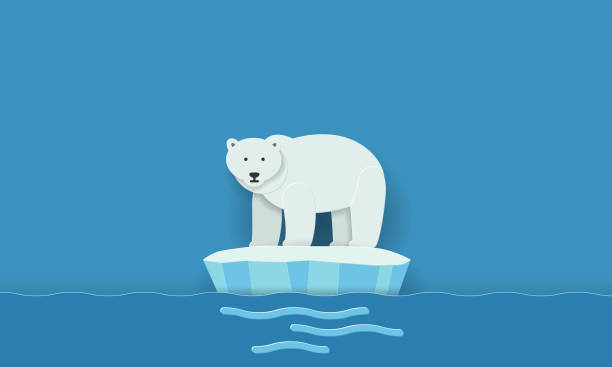Winter is a magical time of year when snow covers the ground and the world looks like a winter wonderland. But did you know that many amazing animals thrive in these snowy environments? Let’s explore some incredible winter wildlife, including polar bears, arctic foxes, and penguins! We’ll learn how these animals survive the cold and discover some fun facts about their homes and behaviors.
Animals That Live in Snowy Environments
1. Polar Bears
Polar bears are the largest land carnivores and are perfectly adapted to life in the Arctic. Their thick layer of fat and furry coats keep them warm in freezing temperatures. Did you know that their fur isn’t actually white? It’s transparent! It appears white because it reflects light, helping them blend into their snowy surroundings.
Fun Fact: Polar bears have a great sense of smell. They can sniff out a seal from nearly a mile away!
2. Arctic Foxes
Arctic foxes are small, fluffy creatures that have thick, white fur in winter to help them stay warm and camouflage in the snow. These clever animals have a special way of hunting: they can hear a lemming (a small rodent) moving under the snow and pounce to catch it!
Fun Fact: Arctic foxes can survive temperatures as low as -58°F (-50°C) and have furry paws to help them walk on snow without slipping.
3. Penguins
While most people think of penguins in warm, sunny places, many species thrive in cold environments, especially in Antarctica! Emperor penguins are the largest penguins and can withstand temperatures as low as -40°F (-40°C). They huddle together in large groups to keep warm during freezing winds.
Fun Fact: Penguins can dive deep into the ocean to find food, and they can hold their breath for up to 20 minutes!
How These Animals Survive the Cold
Animals in snowy environments have unique adaptations that help them survive. Here are some ways they cope with the cold:
- Thick Fur and Fat: Many winter animals have thick fur or a layer of fat to insulate their bodies and keep warm.
- Camouflage: White fur or feathers help animals blend into their snowy surroundings, making it easier for them to hunt and avoid predators.
- Group Living: Animals like penguins huddle together to share warmth and protect each other from the cold.
Activity: Cotton Ball Polar Bears
Materials Needed:
- Paper plate
- Liquid glue
- Cotton balls
- Pencil
- Small cotton ball or pom-pom (for the nose)
- Googly eye (or black marker for the eye)
- Scissors
Instructions:
- Cut the Plate: Start by cutting your paper plate in half. This will be the body of your polar bear!
(Ask your parents for help with this step if you need it!) - Draw Your Polar Bear: Using your pencil, draw the shape of your polar bear on the plate. Here’s how:
- Draw a big oval for the body.
- Add a curved line for one ear and a smaller circle for the head.
- Draw two legs at the bottom and a round bottom.
- Cut Out the Shape: Carefully cut out the shape of your polar bear. Don’t worry about pencil lines; we’ll cover them with cotton balls!
- Add Glue: Put glue all over the polar bear shape. You can do this in sections or cover it all at once!
- Decorate with Cotton Balls: Start sticking cotton balls onto the glue. You can tear and fluff them up to make them look more like fur!
- Make the Face:
- For the eye, if you have a googly eye, stick it on. If not, you can use a black marker to draw an eye or make a small dot using a cotton ball.
- For the nose, use a small black pom-pom. If you don’t have one, you can make a little black dot with the marker or use a sticker.
- Get Creative: Once you’re done, feel free to make more polar bears or other fun things with cotton balls, like an igloo or a fluffy dog!
- Ask for Help: Remember to ask your parents for help if you need it!
Fun Fact: Did you know polar bears have thick fur and fat to keep them warm in icy places? They live in areas where there is snow and ice all the time!
Learn More About Winter Wildlife!
If you want to explore more about winter animals, check out these awesome resources:
Places to Visit
You can also visit virtual zoos and wildlife websites to learn about these fascinating animals and see them in action!
- Virtual Zoo Tours: Many zoos offer online tours where you can watch animals in their habitats.
- Interactive Wildlife Websites: Explore sites that feature videos and games about winter wildlife.
Winter is an exciting time to learn about the incredible animals that thrive in snowy environments. With their unique adaptations and fun facts, these winter wildlife adventures will keep you entertained and educated all season long! So bundle up, head outside, or create some snowy crafts at home, and enjoy your winter wildlife adventure!


Leave a Reply